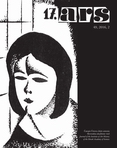
Journal ARS 49 (2016) 2
Petra ŠIMONČIČOVÁ KOÓŠOVÁ
Italian Luxury in the 16th Century Households in Presporok
(Summary)
Archaeological discoveries confirmed the existence of economic and cultural contacts between Bratislava and the regions of Apennine Peninsula. Bratislava was situated at the crossroad of big international trade routes. It was an economic centre of the region; after the Battle of Mohacs the political importance of the town increased too. The findings of this paper have been considerably influenced by the state of research of historic plots, however, it is clear that the most extensive collections of imports concentrated on the plots located along major trade routes in the town (Ventúrska Street, Michalská Street, Water Tower or the castle). On the two of them one can find the import of glass together with the discovery of Italian ceramics. One has to realise that these objects were not generally available, they were rather the artefacts bought by their owners to demonstrate their wealth and social status. The residents of the house on Venturska Street 3 or tall collectors at the Water Tower were obviously very particular about serving up dishes and drinks. On the other hand, the food was more available to the urban population. However, archaeological and botanical discoveries are very modest. The archival sources describing the variety of the goods shed more light on the issue of imported spice and food. Among the consumers of Italian imports were rich Bratislava burghers or the representatives of Italian upper class living and working in Bratislava. The most numerous part of Italian community comprised builders: architects, stonemasons, and bricklayers, for instance Giovanni Maria de Speciacasa, Francesco de Spazio, Felice da Pisa, or Pietro Ferrabosco. They were followed by priests serving in diplomatic services and merchants. Luxurious glass or majolica tableware could have been used at the meetings and congresses held in the town after the central Hungarian authorities had been transferred to Bratislava. This period also saw the increased demand for food and wine. In the 16th century, the aristocracy and bourgeoisie also began travelling more. During their journeys they enhanced their general knowledge. As shows the book of testaments, the pilgrimages were very popular too, with the most frequent destination being Rome. A rosary pearl found in St. Lawrence’s cemetery at the suburb of medieval Bratislava can come from such a pilgrimage.